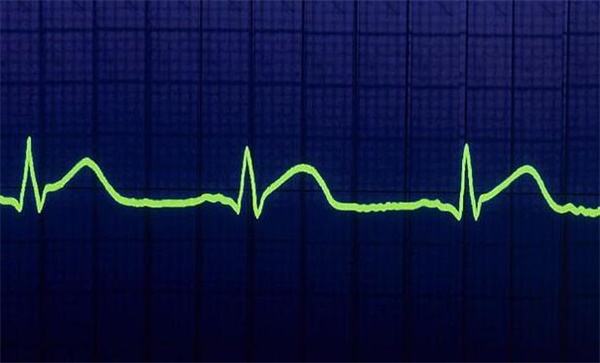[ Instrument Network Instrument Development ] According to the British Daily Mail, US special forces are adopting a more "intimate" way to use the laser to detect the target's heartbeat and identify the target remotely. According to the MIT Technology Review, the Pentagon has developed a prototype technology codenamed "Jetson" that uses infrared lasers to read a person's heart signal.

This technology can use infrared laser to read a person's heart signal, data map
At present, although the technology is far less obvious than fingerprint or face recognition, people's heartbeat has a unique contour, making it one of the most useful biometrics, as a special way to identify someone.
Everyone's heartbeat is completely different. Some companies have begun to use heart signals for human identification, collecting information through a pulse sensor on the wrist, and identifying people for safety. For the US military, this detection technology has the advantage of laser applications that detect relatively long distances.
At present, the effective detection range of this identification technology is about 200 meters. If technical adjustment is made, the detection range can be further expanded. Stewart Remley of the Pentagon's Counter-Terrorism Technical Support Office said that at present, it is impossible to detect someone's heartbeat data from space, but a longer distance is possible.

The heartbeat detected by the laser can penetrate the clothes for information collection, data map
The heartbeat mode is collected by detecting changes in infrared light caused by a person's blood flow. It is highly accurate, accurate at about 95% to 98%, and is very versatile. Unlike facial recognition technology, laser-detected heartbeats can penetrate clothing for information collection, while facial recognition requires a clear view of someone's face.
This method requires a beam of stealth laser to align the target for approximately 30 seconds to obtain sufficient readings, which means that the technique can only be effectively applied to people standing still. As for the application, the US military said that the technology can identify the identity of the ground insurgents through drones to identify their identity.
However, as with any biometric database, the biggest obstacle to achieving this use is to generate a large enough database cross-reference and cross-reference. The technology may also be applied to more civilian applications, such as hospitals, where doctors can monitor a patient's blood flow without having to apply medical equipment to the patient.
Extended reading: the difference between infrared sensor and laser sensor
An infrared sensor is a sensor that measures by the physical properties of infrared rays. Infrared light is also called infrared light. When the infrared sensor is measured, it does not directly contact the object to be measured. The anti-interference performance is poor. The lens needs to filter the infrared light and then measure it, and it needs to be calibrated regularly.
Laser, which refers to the radiation generated by the amplified light at 1.65um. A laser sensor is a sensor that uses laser technology to measure. It consists of a laser, a laser detector and a measuring circuit. Its advantage is that it can realize non-contact long-distance measurement, fast speed, high precision, large range, strong resistance to light and electric interference.
(Original title: US military develops new technology: using infrared laser technology to detect heartbeat)
Soya Meat Equipment,Soy Protein Food Machine,Tsp Texturized Soy Protein,Protein Meat Processing Line
Jinan RuiHan Trading Company Limited , http://www.ruihangroup.com